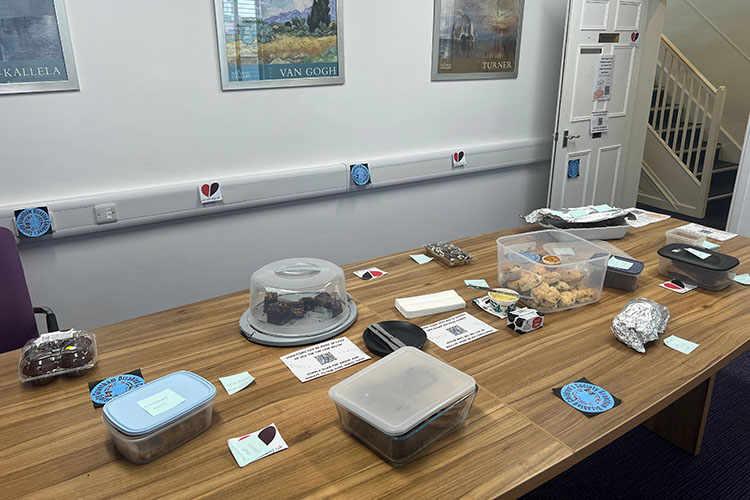Six Crucial Inheritance Tax Numbers to Remember
Inheritance Tax has many intricacies which can make preparing your estate on your own quite difficult. Frankly, the best way to secure peace of mind and ensure you do not inadvertently step into an “inheritance tax trap” is to consult an independent financial adviser (IFA). This helps to ensure you are basing your decisions on the most up-to-date information available to you.
Nonetheless, it is also important for you to have a foundational understanding of inheritance tax and some of the crucial numbers involved. In this short guide, therefore, our Grantham-based financial advisers here at Castlegate will be sharing six vital “inheritance tax numbers” which we recommend that you familiarise yourself with.
This list of six numbers is not an exhaustive one covering the whole subject of inheritance tax (IHT). However, we hope it helps to inform and inspire your thinking. If you want more information about IHT or would like to discuss your own estate with an experienced professional, then do get in touch today to arrange a no-obligation consultation with a member of our team, at our expense.
£325,000
In the 2019-20 tax year, each person has the right to pass on up to £325,000 to their beneficiaries as an inheritance, free of tax. This threshold is known as the “Nil Rate Band”.
There are some other important things to note here. First of all, it is possible to “expand” your IHT threshold if you pass on your residential property to direct descendants when you die (i.e. children or grandchildren). In 2019-20, this is called the Residential Nil Rate Band and it increases your IHT-free threshold by an extra £150,000.
Secondly, if you are married or in a civil partnership then you are allowed to combine your IHT thresholds together. So, if both of you have not used up any of your IHT allowances, then you could theoretically pass on £325,000 x 2 to your beneficiaries, tax-free (i.e. £650,000).
If you both qualify for RNRBs, then you could raise your combined threshold even further by £150,000 x 2 (i.e. £300,000).
40%
This is the rate at which your estate is taxed once it exceeds your IHT threshold. So, if you are a single person (never married / civil partnered) then you can pass on £325,000 to your beneficiaries, tax-free. If, however, your estate is worth £500,000 then £175,000 would likely be subject to 40% IHT.
7 Years
If you make any gifts from your estate during your lifetime (up to £325,000), then your Nil Rate Band will be reduced by that amount if you do not survive another 7 years since the gift. Once you pass the 7-year mark, however, the gift is usually not relevant for IHT purposes any more.
It’s important to note that this “7-year-rule” works on a taper system. So, the rate of IHT due on the gift made within 7 years is reduced as time goes by.
£3,000
When it comes to gifts for IHT purposes, everybody is able to make up to £3,000 of gifts each year without this amount facing tax.
If no gifts were made during a tax year, then this Annual Exemption can be carried over to the following tax year. However, this is capped at £6,000 (so you cannot continue to accrue Annual Exemptions if you have not used them over many years).
There are other important “IHT numbers” to mention on the subject of gifts. For instance, in addition to your Annual Exemption you are allowed to give you child (or their spouse) up to £5,000, IHT-free, as a wedding gift. If your grandchild is getting married, then you can give them up to £2,500 without this gift facing IHT.
Remember, you are also allowed to make as many gifts to different individuals as you like during a tax year without these facing IHT, provided each gift is worth up to £250.
10%
For those who are interested in reducing their IHT exposure whilst making a positive difference to the world, you can reduce your 40% IHT rate to 36% provided you give at least 10% of your estate to recognised charities.
Imagine, for instance, that you are single (never married / civil partnered) and your estate is worth £750,000. You plan to leave it all to your child one day. As a result, your estate will likely face a 40% IHT rate on £425,000 (i.e. £750,000 – £325,000).
For simplicity, this scenario assumes that you have no family home to pass on, and so cannot use the Residential Nil Rate Band to increase your IHT threshold. It also assumes no trusts are in place and that you have made no gifts throughout your life. When all is said and done, the IHT is likely to be £170,000 (i.e. £425,000 x 0.40).
If you left 10% of your estate to charity, however, then your estate is effectively reduced to £675,000 (i.e. £750,000 – £75,000). This means that £350,000 is now subject to a 36% IHT rate (rather than 40%), resulting in a £126,000 IHT bill; i.e. £44,000 less than if you had not donated 10% of your estate to charity.
0%
If you give any money from your estate away to charities, amateur sports clubs, universities or museums, then these gifts will not be subject to IHT at all. There is no annual cap on the gifts as there is with the Annual Exemption above.












